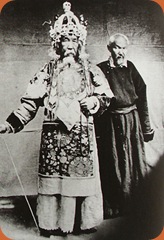Nowadays, there are several types of Tibet buddhism schools in Russia.
1. Gelug school, that gathers all the currents in Buratia, Kalmikiya and Tuva. It has been formed in the XV century and most of Russians buddhists are it’s members. There are 4 gelug communities in Russia:
a) the Moscow buddhist center (approximately 150 members), that was founded in 1993 par Jampa Thinley – Dalai-Lama representative in Moscow and the Tibet cultural center director. He has also created buddhist centers in some other towns in Russia.
b) the Saint-Petersbourg community created by Jamyang Khyentse, who has acquired the title of th highest level of Tibet; he immigrated to Saint-Peersbourg en 1993 and he wes going to return in India but his students convinced him to stay
c) “Elo-center”, that is guided by the teacher from Tibet but who has taken the Russian citizenship. Apart from teaching, the community’s activity is also publishing the buddhiste litterature.
d) the center of Dandaron’s followers. Bidia Dandaron was one of the most important figures for the Russian buddhism. His followers deny the notions of God and soul and insist that buddhism is a philosophy and not a religion. Other buddhist schools respect them but prefer keeping a certain distance.
2. Nyingma school is the most ancient school of Tibet, it’s Russian center was created in Saint-Petersbourg by Alexander Kulik. Another Nyingma center is in Moscow. This school is often supported by a famous Russian rock musician Boris Grebenshikov, who is very well known for his trips to Tibet and his affection for buddhist religion.
3. Karma-kagyu school. This school’s communities were created by Lama Ole Nydhal. He had been invited to Russia by Vladimir Henzel, the Russian buddhism specialist, he introduced him to a group of his collegues. Today he owns an association where the meditaion sessions are held every day. Lama Ole Nydhal has often been critisiced for being too srict with his followers and for being too emotional during his speech, but he still has a big succes among the Russian buddhist schools.
4. Sakya school – the smallest in Russia, it only has about 20 people in Moscow and one center in Kalmikiya.
5. Rimay school eappeared in Russia thanks to Vitaliy Fedko, who has created it in Saint-Petersbourg after being dissapointed by Nydhal’s way of teaching. This association’s members do not think of themselves as a community, they say that their only activity is a collective meditation.
All these currents have their history and their traditions despite their recent creation. They become more and more numerous and diversified, for buddhism becomes very present in Russia as a way of life that people choose more and more often.
But the only schools who became important stay those who are linked to the Tibet buddhism.
– Lada Dibrova for www.buddhachannel.tv




